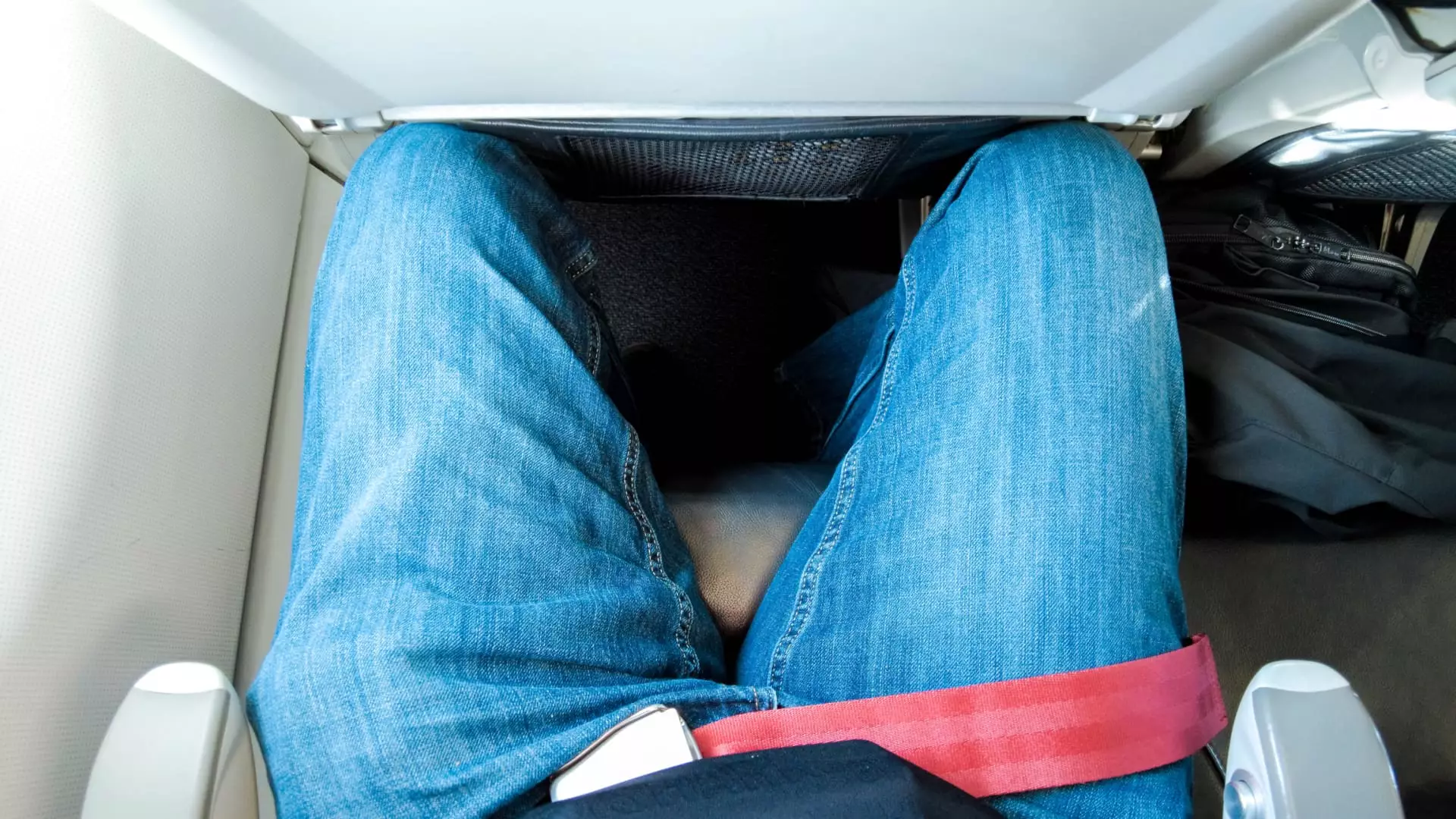In a scenario that has become all too familiar in the aviation sphere, a couple’s altercation with a fellow passenger over the position of her seat has not only led to a public outcry but has also garnered the attention of Cathay Pacific Airways. This incident, which occurred on a long-haul flight from Hong Kong to London on September 17, showcases the escalating tensions regarding in-flight etiquette that often devolve into confrontations aboard cramped commercial airliners. In this episode, video footage captured the couple ridiculing and jostling a female passenger who had decided to recline her seat during the 14-hour journey.
This incident raises questions that go beyond mere discomfort during travel; it invites scrutiny into the cultural and societal dynamics that influence how we engage with one another in shared spaces like airplanes. The subsequent ban on the couple issued by Cathay Pacific serves as a strong statement from the airline, emphasizing their commitment to maintaining a respectful environment on their flights.
Cathay Pacific’s decision to ban the couple reflects a zero-tolerance policy toward any behavior that disrupts the peace and safety of passengers onboard. Following the public backlash and the viral nature of the incident, the airline’s statement claimed that it had previously warned the disruptive couple. However, the core of the conflict appears to stem from a failure of the in-flight staff to effectively mediate the situation. The disagreement escalated to the point where nearby passengers felt compelled to intervene, calling for civility and decency.
It is vital to consider the implications of such events on the airline’s reputation, particularly when related to the evolving dynamics between Hong Kong residents and mainland Chinese citizens. The taunts directed toward the reclined passenger included references to her being a “mainlander,” indicating a complex layer of socio-political sentiments that are often exacerbated during air travel.
As social media platforms buzzed with reactions from the incident, it became apparent that many mainland Chinese users felt the response from Cathay Pacific was inadequate until public sentiment forced a reaction. The airline’s struggle to navigate these tense waters illustrates the difficulties they face amid a landscape where travelers come from countries with differing cultural norms, expectations, and grievances. This incident did not unfold in a vacuum; rather, it taps into a broader narrative that echoes past controversies about discrimination and disrespect that travelers, particularly from mainland China, have allegedly encountered in Hong Kong.
The simple act of reclining one’s seat may seem innocuous, but it has evolved into a contentious issue as passenger sizes increase while seat pitches decrease. In such an environment, personal space becomes a commodity that individuals are reluctant to give up. Those who argue in favor of reclining their seats often suggest that it is a feature designed into the seats. Conversely, many others perceive it as a flagrant disregard for the comfort of others, particularly in the notoriously cramped economy class sections.
Consequently, air travel has become a battleground for what constitutes proper airline etiquette. Factors such as time of day, duration of the flight, and the reclining capabilities of the seat behind can influence opinions on this topic, suggesting that the context is critical when assessing behavior in this confined environment.
The disparity in attitudes toward reclining seats also mirrors the broader cultural divide between mainland China and Hong Kong—a schism characterized by differing historical trajectories and socio-economic contexts. The 2019-2020 protests in Hong Kong exemplified this tension, as many locals expressed concerns over increasing governmental influence from Beijing. It appears that even aboard an aircraft, where individuals are molded into a singular community by circumstance, these cultural distinctions can surface and lead to conflict.
Ultimately, incidents like the one on Cathay Pacific flights compel us to reflect on what it means to share space with strangers. As the airline industry continues to adapt to a growing and diverse passenger base, understanding and addressing the nuances of in-flight decorum become essential. With airlines under increasing scrutiny from their customers, there is ample evidence suggesting that fostering an environment of mutual respect and understanding is more crucial now than ever in creating a harmonious travel experience.


Leave a Reply